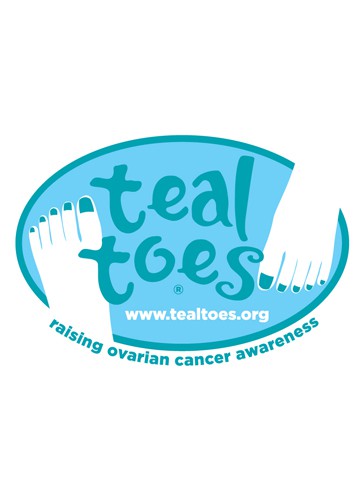Ovarian Cancer is the 9th most common cancer in women and the 5th leading cause of cancer death according to the American Cancer Society. Dubbed as the “silent killer”, it is usually discovered in its later stages. Its symptoms were thought to not develop until the chance for cure was poor. Its incidence is higher in older women but it can affect women at any age.
Recent studies have shown that this is not true. It has been shown that 90% of women experience symptoms with early stage ovarian cancer. The problem is that many of these women ignore those symptoms and do not get checked. Fewer than 20% of ovarian cancers are caught early (stage 1) when they are most treatable. Unfortunately most women would have progressed to stage 3 by the time they are diagnosed when prognosis is much lower.
Symptoms include:
- Bloating that is persistent
- pelvic or abdominal pain
- trouble eating or feeling full quickly
- urinary symptoms, (needing to go to the bathroom immediately, or having to urinate often)
Symptoms such as the ones listed above are relatively common and occur with a number of ailments; they are actually more likely to be due to causes other than ovarian cancer. What you should monitor is the frequency and the recurrence of these symptoms. If you experience these symptoms almost daily for more than a few weeks go see your doctors.
Additional symptoms may include fatigue, indigestion, back pain, pain with intercourse, constipation and menstrual irregularities; although these symptoms are found equally in women without the disease.
We all experience these symptoms occasionally.This doesn’t mean that we have cancer, but if it’s something new to you and it persists for more than a couple of weeks and occurs almost daily or every day, you need to bring it to a doctor’s attention.
Suggested tests include combination pelvic/rectal exam, a transvaginal ultrasound, and a CA-125 blood test.
CA-125 is a tumor marker blood test. The substance is found in greater concentration in tumor cells than in other cells of the body. It is present in greater concentration in ovarian cancer cells. An elevated CA-125 can indicate benign or malignant conditions.
Risk factors:
- increase in age
- having a family history of ovarian or breast cancer
- having a personal history of cancer
- infertility
- never being pregnant by choice
- obesity
- menopausal hormonal therapy
Women who ate a low fat diet and ate more fruits and vegetables in their daily diets had a reduced ovarian cancer risk compared to those who didn’t.
Kaempferol (a flavonoid) found in tea, broccoli, kale and spinach and luteolin (another flavonoid) found in peppers, carrots, cabbage and celery have been identified as being cancer protective. Consumption of these 2 flavonoids leads to a decrease in the percentage for development of ovarian cancer.
Whole grains may also aid in ovarian cancer risk reduction. The fiber and phytochemicals in the whole grains such as oats, barely are believed to block the reabsorption of estrogen in the gut, which reduces the risk of ovarian cancer and other hormone related cancers.
September is ovarian cancer awareness month. Teal is the color of choice. “Teal toes” is a wonderful initiative for ovarian cancer awareness. They encourage women to paint their toes teal as part of raising awareness. The idea is to get a conversation started when someone asks about your peculiar shade of nail polish. They also have wallet sized cards to pass along with the symptoms for ovarian cancer.
To find out more visit http://www.tealtoes.org/

